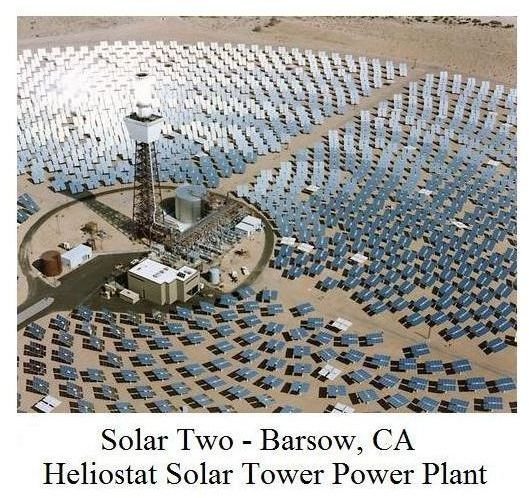Facts about Solar Energy History and Development
Facts about Solar Energy In Ancient Times
Solar energy has been providing indirect benefits to mankind since time immemorial, by its powering of photosynthesis, the source of all food on earth; its powering of the hydrologic cycle (also known simply as the water cycle) by which precipitation and fresh water is continually regenerated; and its powering of the weather patterns that generate the wind, used since ancient times to drive sailing ships. This article will concentrate, however, on facts about the history of direct use of solar energy.
The history of direct use solar energy begins as early as the 7th to 2nd centuries B.C., when Greeks and Romans used magnifying glasses and mirrors to focus sunlight for starting fires and lighting torches. By the first few centuries A.D. Romans and Greeks were using passive solar design for homes and public buildings, which is utilizing building architecture to make better use of sunlight to provide light and heat to buildings.
Facts about Solar Energy in the 19th Century
The photovoltaic effect was discovered by French scientist Edmond Becquerel in 1839. This photovoltaic effect would be developed and improved upon to lead to the photovoltaic solar panels in use today. A steam engine powered by solar energy was developed by the French mathematician, August Mouchout in 1861. The low price of coal, however, contributed to the lack of commercial success for this invention. Nonetheless, European scientists took a keen interest in development of solar energy throughout the 19th century, leading to a patent for the first commercial solar water heater by Baltimore inventor, Clarence Kemp in 1891.
Facts about Solar Energy Development in the 20th Century
During the first half of the 20th century, fundamental research by such notables as Albert Einstein and Robert Milliken led to a better understanding of the photoelectric effect. This work led to Albert Einstein being awarded the Nobel Prize in physics in 1921 for his theories explaining the photoelectric effect. .
In 1954, the photoelectric theories were reduced to practice by development of the silicon photovoltaic cell, the first truly usable photovoltaic solar cell, which converted 4% of the incident solar radiation to electrical energy. During the latter half of the 20th century, there has been tremendously increased interest in and use of solar energy, including passive solar design of buildings; development of thermal solar collectors for solar water heating and active solar heating of buildings;

and development and improvement of photovoltaic solar panels for electrical generation.
During the last quarter of the 20th century, much work has been done on developing concentrating solar power technologies for centralized solar thermal power generations. This has included demonstration plants, like Solar One and Solar Two in the United States.
Image Credits: Flat Plate Solar Collectors: Centers for Disease Control (www.cdc.gov)
Solar Two Demonstration Plant: www.alt-energy.info
Facts about Solar Energy Development in the 21st Century
The enormous market growth in photovoltaics during the 21st century has revived the research and expansion in the solar industry. The large requirement for photovoltaics has established economies of scale, thus gradually reducing costs. The photovoltaics market is presently increasing at a fast pace, due to which costs will be reduced further. Presently, solar thermal water heating is a progressively cost-effective means of reducing demands of gas and electricity.
References
1. U.S. Department of Energy, Energy Efficiency and Renewable Energy, The History of Solar
2. NREL, Concentrating Solar Power Projects, https://www.nrel.gov/csp/solarpaces/
3. Bengtson, H., Passive Solar Heating Basics, an online, continuing education course for Professional Engineers
